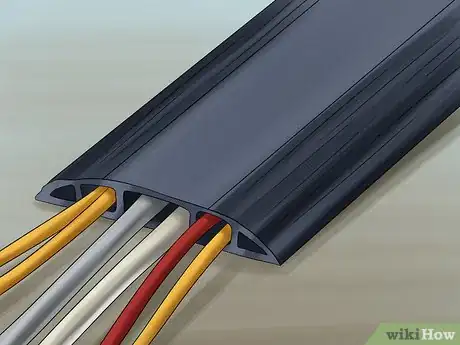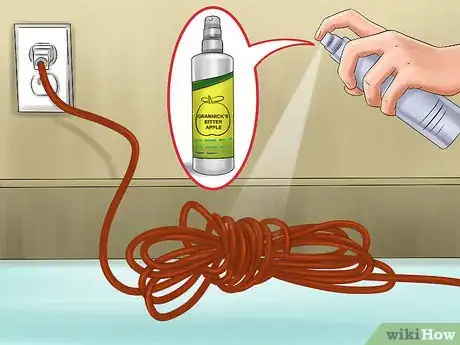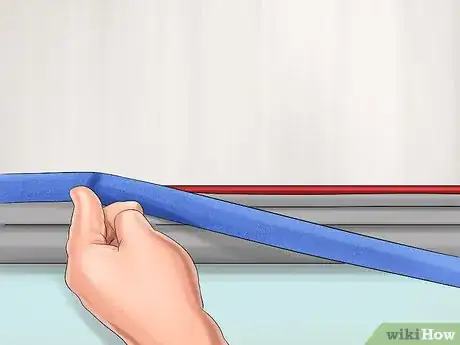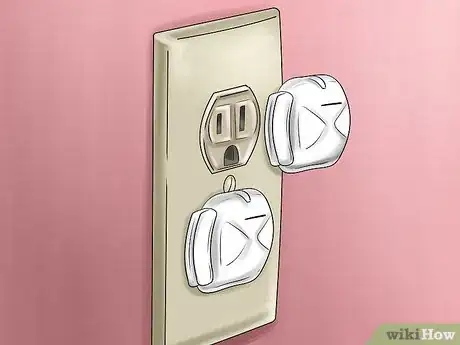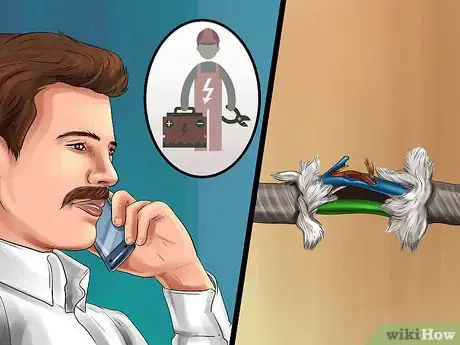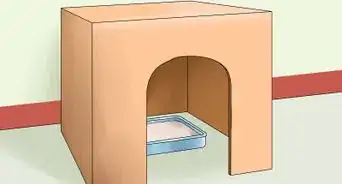This article was co-authored by Lauren Baker, DVM, PhD. Dr. Lauren Baker is a Veterinarian and Assistant Scientist at the University of Wisconsin-Madison. With over 10 years in veterinary medicine, she specializes in the concept of “one health,” which uses insights from veterinary medicine to help human medical research. She holds a Ph.D. in Comparative Biomedical Sciences, a Doctor of Veterinary Medicine, an MS in Comparative Biomedical Sciences, and a Bachelor’s degree in Psychology from the University of Wisconsin-Madison.
This article has been viewed 13,831 times.
Electric shock is not very common in cats, but when it occurs it can be deadly. Curious adult cats and kittens that are teething are most susceptible to electric shock, as they may enjoy chewing on power cords—the biggest risk factor. By protecting your cat from electrical cables and secondary sources of electric shock, you can keep your cat safe and healthy.[1]
Steps
Securing Your Power Cords
-
1Use power cord covers. Cord covers are heavy, plastic tubing that encase your electrical cords. The covers are too hard to bite or scratch through, which will ensure your cat can’t make contact with the electrical current inside. Simply guide your appliance’s cord through the cover’s opening and plug in as normal. The tubing also comes in many widths so you can bundle several cords together or just protect a single cord.[2]
- Cord covers come in a variety of colors to match your home décor.
-
2Spray deterrents on your electrical cords. Many deterrent sprays, such as Grannick’s Bitter Apple, have an off-putting taste to discourage your cat from chewing. Unplug your devices and spray the solution on a washcloth. Rub the length of each cord with the cloth so it is coated fully, avoiding the plug.[3]Advertisement
-
3Block access to cords with furniture. The easiest way to keep your cat away from your electrical cords is to restrict access entirely. Use furniture in your home to block access to dangling power cords. It may be helpful to get down on the floor at cat level to see which cords are accessible from the ground. You can use painters’ tape to secure excess cord length to the wall behind your furniture.
-
4Store appliances when not in use. While some items are always plugged in, others, such as counter-top kitchen appliances, can be stored when not in use. Make an effort to unplug and store such items to keep the cords from enticing your cat.[4]
Minimizing Other Risks of Electric Shock
-
1Keep your cat indoors. It is generally always safer for your cat to be indoors than outdoors. Cats in rural areas can come upon electric fences intended for livestock, and cats in cities can come across downed power lines or stray voltage from leaking utilities. If you want to let your cat outside, do so in a fenced backyard and supervise them to ensure their safety.
-
2Use outlet protectors. Curious cats may scratch at wall outlets. While shock from this is a more minor risk, you can buy outlet protectors for peace of mind. These plastic covers—often intended for baby proofing—have prongs that plug into your outlet much like a normal plug, blocking access to the current.[5]
-
3Ensure wiring is up to code. Faulty electrical wiring is a hazard to both you and your cat. If any wiring in your home looks suspect, perhaps tinkered with by a DIY-inclined previous homeowner, call an electrician to have it examined for safety. Always get your electrical work performed by a licensed electrician.
- Signs of faulty wiring include flickering, buzzing or dimming lights, or excessive circuit-breaker trips.[6]
- If there are any exposed wires in your home, cover the areas with coated electrical tape until you can call an electrician.
References
- ↑ http://www.petmd.com/cat/emergency/accidents-injuries/e_ct_electric_shock_injury
- ↑ https://www.vetary.com/cat/condition/electrical-injuries
- ↑ http://pets.webmd.com/taste-deterrents
- ↑ http://www.humanesociety.org/animals/cats/tips/cat_proofing_your_house.html
- ↑ http://www.humanesociety.org/animals/cats/tips/cat_proofing_your_house.html
- ↑ https://electricalconnection.org/news/6-warning-signs-of-faulty-electrical-wiring-in-your-home-103
About This Article
To keep cats safe from electrical shock, put cord covers over any power cords your cat can reach so it can't chew on them. Alternatively, you can spray your power cords with deterrent spray so they'll taste bad if your cat tries to bite them. Or, you can try rearranging your furniture to block your power cords so your cat can't access them. In addition to protecting your cat from power cords in your home, you may also want to put outlet protectors in all of your wall outlets in case your cat scratches at them. For advice from our Veterinary co-author, like how to keep your cat safe from electrical hazards outside of your home, keep reading.
